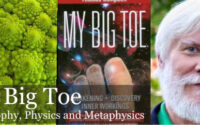Free Will as an Illusion – 3 – A Pragmatic Approach
In my previous post about Free Will I discussed why author Sam Harris calls Free Will an illusion. I suggested that there is a difference between Free Will (Big F) and free will (little f), and that is is Free Will (Big F) that Harris talking about.
According to Harris and many others there is simply no way Free Will can be reconciled with the idea of universal causality – the hypothesis/scientific assumption that every physical incident has a cause. Free Will seems to require “uncaused” events: that is, events that simply happen spontaneously as the result of agents exercising their “Will”. As soon as we admit that these acts of Will are influenced by numerous factors (environment, culture, chemical makeup, brain states, etc., etc.) we are forced to abandon the idea that there can be any “uncaused” mental events.
Those with a religious bent will introduce a metaphysical entity at this point – a “soul” or some such thing – and this is supposed to solve the problem. But it is impossible to know anything about this soul using normal perceptual or scientific tools, since, by definition, it can’t be seen or located in physical space; and its effects are impossible to measure without simply assuming its existence in advance.
So I think we can confidently dismiss talk of “souls” in this context. They simply do not help us explain what appears to be happening in the physical/real world.
Nevertheless, there are others – some scientists, some philosophers, and many “ordinary” men and women who are inevitably unhappy with this talk of Free Will as an illusion. As of yet I have not found an explanation that is very convincing. Many of them turn on the meaning of the terms in everyday usage (as does Harris’s to some extent), essentially insisting that what we normally mean by “free will” cannot simply be dismissed out of hand because clearly many of our most cherished notions of human autonomy and personal responsibility require some everyday, practical idea of free personal will.
Now I realize this ordinary language approach sort of begs the question: the fact that we normally assume something to exist cannot persuasively be used to prove that it does. So I think we need to take this idea further in order to advance this discussion.
Analogy with “Normal” Perception
I want to suggest that there is a fairly obvious parallel with the way we treat sense perception of the world. There are, in effect, two “realms of discourse” which are clearly at odds with each other, and no obvious, widely-accepted proposal for reconciling them. Take the “solidity” of physical objects for instance. On the one hand scientists tell us that physical objects consist of billions of atoms with much empty space both inside the atoms themselves and between neighbouring atoms. We hear this all the time, don’t we?
But on the other hand there is our normal perception of the physical world. We do not see empty space in things. We see solid objects. Whereas our notion of “solidity” is challenged by the scientific facts, that notion clearly has meaning within the realm of every day experience. What is required to reconcile these two notions are a) theoretical constructs that tell us how the properties of the atomic world give rise to solidity (as well as all the differentiation we see in ordinary experience, and b) theories that describe how our perceptual machinery interacts with the atomic, and how this gives rise to meaningful, “true” perceptions of the way things “really are”.
This is a kind of metatheory about perception. I have put “true” and “really are” in quotations because clearly we are giving these terms a quasi-technical meaning. Both of these terms refer (roughly) to “a consistent reflection of the way our senses interpret the physical data they receive”. That “consistent reflection” contains the perception of solidity, texture, colours, smells, etc.
If we view these things strictly from the scientific (atomic) viewpoint, they are like Harris’s illusions. But viewed through the lens of our metatheory they are simply the way our physical machinery – our senses of sight, smell, touch, etc. – interpret these things. So they are not illusions at all.
As an aside, this is not meant to tangle us in Kantian notions of “things-in-themselves”. This is a purely pragmatic description of the perceptual process. There are no “things-in-themselves”. There are simply data and the interpretive mechanisms through which we interpret them. We cannot “get behind” the data except with some other interpretive mechanism. This, I believe, is the critical insight of the theoretical pragmatic approach.
As I say in another post, “In effect, the seemingly obvious conclusions of theoretical analysis conflict with the perceptions of practical life. A compromise must be made – where practical outcomes must be considered along side of theoretical conclusions.”



